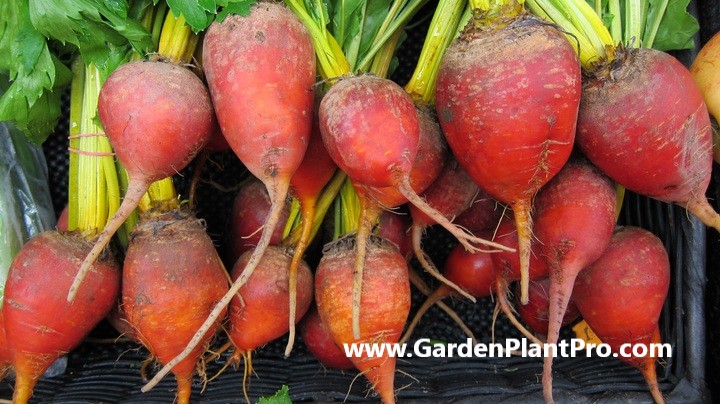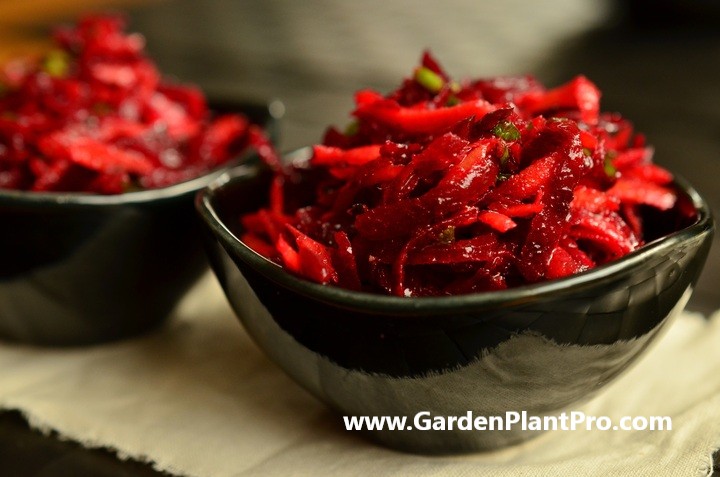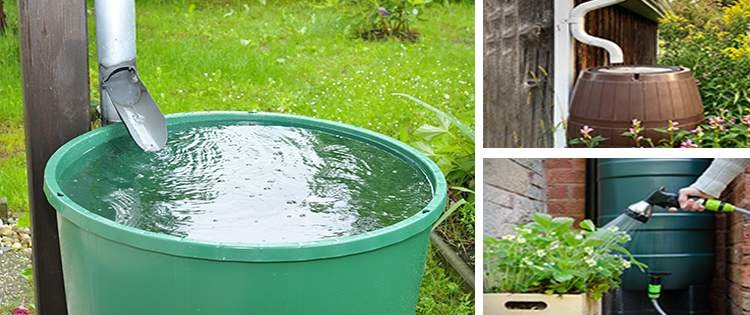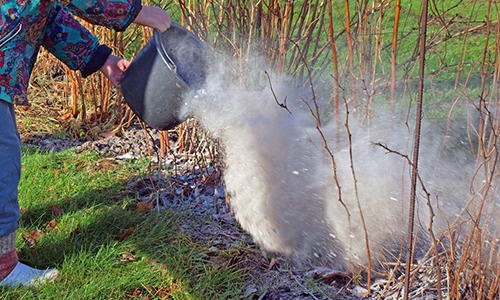Beetroot is a versatile and nutritious vegetable that can easily be grown in your home garden. With its sweet and earthy flavor, beetroot can be used in a variety of dishes, from salads to soups, and even baked goods. Not only is it delicious, but it’s also packed with vitamins and minerals, making it a healthy addition to any diet.
Growing beetroot at home is a fun and rewarding experience, and with just a few simple steps, you can have a bountiful crop in no time. Whether you have a small balcony or a spacious backyard, beetroot is a great option for home gardeners of all levels.
A Brief History
Beetroot, also known as beets, have been enjoyed for centuries and have a long history of being cultivated by many cultures. The ancient Greeks and Romans used them for medical purposes, including treating fever and constipation. In medieval times, beets were believed to have anti-inflammatory properties and were used to treat a variety of ailments.
Beets were introduced to North America in the mid-1700s and are now one of the most popular vegetables in the United States. They come in a variety of colors, shapes, sizes, and textures, making them a great choice for any garden.
Beetroot is a member of the same family as chard and spinach and is closely related to sugar beet. It is an important crop worldwide due to its high sugar content which is used to make sugar, molasses, and even alcohol.
Beetroot can be eaten raw or cooked, making it a versatile vegetable that can be incorporated into many different dishes. It is high in vitamins A and C, potassium, iron, magnesium, and other minerals. It also contains antioxidants which can help protect against heart disease and certain types of cancer.
Beetroot has been part of our diets for centuries and is sure to remain so for many years to come! Whether you choose to grow it in your own vegetable garden or purchase it from your local grocery store or farmer’s market – be sure to enjoy this delicious vegetable as often as possible!
Nutritional Benefits
Beets are a nutrient-packed vegetable that can provide a variety of health benefits. They are rich in vitamins and minerals, including folate, potassium, magnesium, vitamin C and dietary fiber. They are also high in antioxidants, which can help protect against certain diseases, such as cancer and heart disease.
Beets are also known to be beneficial for digestive health. Their high fiber content helps to keep your digestive system running smoothly. Additionally, beets contain nitrates which have been shown to reduce the risk of developing high blood pressure and other cardiovascular diseases.
Beets are also known to boost energy levels.
One study found that people who consumed beet juice before exercise experienced improved performance. This could be due to their nitrate content, which helps to increase blood flow to the muscles and improve oxygen delivery during intense physical activity.
Finally, beets contain betalains, a type of antioxidant that has been linked to anti-inflammatory properties. This means that beets may have potential benefits for conditions such as arthritis, asthma and eczema.
Including beets in your diet is a great way to take advantage of the many nutritional benefits they offer. When buying fresh beets, choose ones with vibrant color and firm texture (or grow your own ;-). Once you’ve selected your beets, store them in a cool place until you’re ready to use them in recipes or prepare them for eating raw or cooked.
When cooking with beets, consider roasting or boiling them for the best results – this will help bring out their unique flavor and maximize their nutrition content as well.
Common Varieties & Their Uses
When it comes to growing beetroot, there are several varieties to choose from. The most common varieties are the Detroit Dark Red, Early Wonder Tall Top, Chioggia and Cylindra.
The Detroit Dark Red is an heirloom variety that produces round, dark red beets with deep red flesh. The Early Wonder Tall Top is an early-maturing variety that produces round beets with a sweet flavor. Chioggia beets are characterized by their distinctive pink and white rings when cut. They are also known for their mild flavor. Lastly, Cylindra beets are elongated and cylindrical in shape with smooth skin and sweet flavor.
When To Sow
When it comes to sowing Beetroot, timing is key. The best time to sow Beetroot is from mid-spring until the middle of summer, although you can get a head start by using crop protection and sowing a few weeks earlier. To sow, make a small hole twice as deep as the seed size, pop 3 seeds in it, then cover with soil and leave 10cm between each seed. Plant the seed 10mm deep and 50mm apart.
Once planted, Beetroot will take 3-4 months to reach maturity. The younger the beets are at harvesting, the sweeter they will be. It’s important to remember to sow small batches at fortnightly intervals for a continuous supply, as this will ensure you get a steady supply of fresh veggies throughout the season.
To ensure optimal results when sowing Beetroot, make sure you choose a suitable location in your garden and prepare the soil before planting. This includes digging over the soil and adding organic matter such as compost or manure to help retain moisture and provide nutrients for healthy growth. Once your soil is ready, simply pop 3 seeds in each hole, cover with soil and water in lightly.
Choosing A Suitable Location In The Garden
When choosing a suitable location in the garden for growing beetroot, it is best to select an area with full sun. Beetroot thrives in direct sunlight, so it is important to choose a spot that gets at least six hours of sun per day. The soil should also be light and well-drained, as beetroot doesn’t like to sit in water for too long. It is also beneficial to have soil that is rich in organic matter.
DIY PROJECT: Collect rainwater no matter where you live...
This DIY project is the best way to legally collect rainwater NO MATTER where you live. Get chlorine-free water, cut down on your water bills, and have enough for an emergency situation or to water your garden. Read More Here...
Prior to sowing, it is a good idea to dig in a bucketful of well-rotted garden compost or other organic matter such as Yates Thrive Natural Blood & Bone with Seaweed. Loosening the soil with a garden fork will also help with drainage and aeration. Once the appropriate location has been chosen and the soil has been prepared, beetroot can be sown 10mm deep in rows 30cm apart, with plants spaced 15cm apart.

Preparing The Soil
Preparing the soil is an essential step in growing beetroot, and one that should not be overlooked. Prior to sowing, the soil should be enriched with organic matter such as well-rotted garden compost or manure. Dig in a bucketful of this organic matter to improve the soil’s texture and fertility. Additionally, apply a fertilizer that is high in phosphorus and potassium and low in nitrogen as nitrogen stimulates leaf growth at the expense of root development.
Beetroot grows best in fertile, well-drained soil and is frost tolerant, so it can handle some shade but does better in full sun. Pre-warming the soil with a cold frame or horticultural fleece/row cover will help you to get the earliest sowings off to a good start. Once the soil is prepared, you can go ahead and sow the seeds or plant seedlings into the ground.
Planting The Seeds Or Seedlings
Planting beetroot seeds or seedlings is an easy process that will reward you with a delicious vegetable. Depending on the variety and region, beetroot can be planted from early spring to mid-summer.
For direct sowing, choose a sunny location in the garden that has well-draining soil. Make a small hole, twice as deep as the size of the seed and pop 3 seeds in it. Leave a 10cm space between each seed. For seed drills, use a long-handled tool to make depressions into raked soil and sow seed 10mm deep and 50mm apart. You can also sow in rows 30cm (1ft) apart, with 3 seeds at 10cm (4in) spacings, 2.5cm (1in) deep.
It is also possible to transplant beetroot seedlings if you have grown indoors or purchased them from your local garden centre. Transplanting is best done during a cool part of the day and watered in afterwards to avoid any transplant shock.
Once the seedlings are established, care for them by watering regularly, particularly during hot weather or when they’re actively growing. Fertilising with a liquid feed every month will help encourage good growth, produce more leaves and roots, as well as extend the harvest period.
When harvesting, choose “larger than golf ball sized” beets for best flavour. If you plan on storing for later use, wait until beets reach at least 2 inches in diameter before uprooting them from the soil.
Caring For The Seedlings
Caring for the seedlings is essential in ensuring the successful growth of your beetroot. Once they have been planted and the soil has been watered, the seedlings must be tended to regularly.
When caring for your seedlings, ensure that they are kept moist but not overly wet. Water them a few times a week and make sure that the soil is never allowed to dry out completely. Make sure to water in the morning so that the plants have time to dry off during the day.
Weeds should be removed as soon as they are spotted as they can compete with your beetroot plants for resources. Be sure to use an organic mulch around your plants to keep weeds from growing and help preserve moisture in the soil.
As the plants grow, thin out any seedlings that are growing too close together by snipping them off at ground level with scissors or a sharp blade. This will help ensure that each beetroot grows to its full potential without being crowded by its neighbors.
Fertilizing your beetroot plants once every few weeks will help boost their growth and encourage strong root development. Use an organic fertilizer such as fish emulsion or compost tea and apply according to package instructions.
By following these simple guidelines, you can ensure that your beetroot seedlings will thrive and produce a bountiful harvest of delicious vegetables come harvest time.
Watering & Fertilizing
Watering and fertilizing are important components of growing beetroot in your vegetable garden. To ensure success, it is essential to keep your plants well supplied with moisture, especially during the period of fertilization. As beets are a fast-growing crop, adding fertilizer or compost to the soil prior to planting is recommended.
Beetroots require a nutrient-rich soil that is high in phosphorus and potassium, with low nitrogen content. Nitrogen stimulates leaf growth rather than root growth; therefore too much nitrogen can lead to weak stems and an unhealthy crop. It is important to prepare your soil before sowing or planting by adding fertilizer or compost and ensuring it is at the right pH level for the best results.
Once your beetroot plants have been sown or transplanted into the garden, water them regularly, so that the soil remains moist. This will help draw nutrients into the soil where the roots can access them easily and help stimulate healthy growth for your plants. If you are using a drip system for watering, ensure it is set at a slow rate to prevent waterlogging of the soil and root rot.
Do you have some charcoal in your house right now? We call charcoal a “miracle leftover” for anyone who wants to be a little more self-sufficient and cut costs. That’s because it can help you with so many different things around the house and garden. You can even use it to make an energy-free fridge. Read More Here...
If you are not using organic materials to fertilize your soil, you may wish to apply a soluble fertilizer every few weeks during the growing season for healthy plant growth. Follow the instructions on the fertilizer packet carefully as over-fertilizing can cause damage to your beetroot plants.
When & How To Harvest
When it comes to harvesting your beetroot, timing is key.
You can begin to harvest when the root has reached golf ball size or larger, which is usually around 6-8 weeks after sowing. You can also harvest the young tender leaves to use in salads or as a cooked green.
To harvest your beetroot, use a garden fork to loosen the soil around the plant before gently pulling up the root with your hands. Once harvested, cut off the foliage, leaving 2-3cm of stem attached to the roots.
Beetroots can be stored in cool and dark places for several weeks after harvesting. To store them for longer periods, you can pickle them or freeze them for later use.
For a fall harvest, you should wait until the foliage and stems have died back before harvesting the roots. The leaves should be cut off and the roots stored in slightly moist sand or sawdust until needed.
By following these steps and harvesting your beetroots at the right time, you will ensure you get a bumper crop of this nutritious vegetable for your vegetable garden!
Storing
Once your beetroot has been harvested, it can be stored for up to a month in a cool, dark place. If you have an abundance of beetroot, consider canning or freezing them to extend their shelf life.
When storing beetroots, make sure that the leaves are removed as these will draw moisture out of the root and shorten its shelf life. Wrap the roots in newspaper or store them in a breathable container such as a paper bag or cardboard box.
It is important to check your stored beetroot regularly to ensure they are not spoiling. If any roots begin to show signs of softening or rot, they should be thrown away to prevent the spread of any diseases.
Common Diseases & How To Control Them
Beetroot is a popular vegetable that can be grown in the home garden. While it is relatively easy to cultivate, there are certain diseases that can affect its growth and production. The most common diseases affecting beetroot are powdery mildew, downy mildew, and fusarium wilt. Knowing how to recognize the symptoms and manage these diseases is essential for a successful harvest.
Powdery Mildew
Powdery mildew is a fungal disease that appears as white patches on the leaves and stems of the plant. It is most prevalent in conditions where the air is humid and there is poor air circulation. To control powdery mildew, it is important to keep weeds away from beetroot plants, avoid over-watering, provide plenty of space between plants for good air circulation, and use fungicides if necessary.
Downy Mildew
Downy mildew is another fungal disease that manifests as yellow spots on the leaves of the plant. It is more common in humid climates and can be spread by splashing water or insects. To prevent downy mildew, make sure to water your beetroots at ground level rather than on their foliage, mulch around the plants to prevent splashing water from landing on the leaves, and use fungicides if necessary.
Fusarium Wilt
Fusarium wilt is a soil-borne disease caused by a fungus which affects the root system of the plant. Symptoms include wilting of the foliage and yellowing leaves. To control fusarium wilt, it’s important to practice crop rotation so that susceptible crops such as beetroots are not planted in the same place year after year. Additionally, it can help to soak seed clusters overnight in warm water before planting to reduce infection levels in the soil.
Common Pests & How To Control Them
Common pests such as aphids, leaf miners, flea beetles and slugs can be a problem for beetroot plants. In order to prevent infestation, it is important to monitor your plants regularly and take preventive action. Planting companion vegetables that attract beneficial insects such as ladybugs can help reduce the population of pests.
Physical controls are often the most effective way to control pests. Aphids can be removed from plants by spraying them off with a sharp stream of water from the hose. Hand-squishing aphids is also easy, or cover them with a cloth and shake them off your beetroot plants. To control leaf miners, remove any affected leaves or shoots and destroy them. Slugs can be collected in beer traps or handpicked off the plants.
In some cases, chemical insecticides may be necessary to control serious infestations of pests. However, it is important to use these carefully and only when absolutely necessary as they can have negative effects on beneficial insects and other wildlife in the garden. Read and follow the instructions on the label carefully before using any insecticide.
CASE STUDY: We've been living off the grid for the last 40 years...
In all that time an electric wire has never been connected to our house. We haven’t gotten or paid an electricity bill in over 40 years, but we have all the electricity we want. We grow everything we need, here, in our small backyard. We also have a small medicinal garden for tough times. Read More Here...
Finally, growing vegetables with coloured leaves that insects don’t expect can help protect your beetroot from pests. For example, purple varieties of cabbage or kale are less likely to attract unwanted attention from pests than traditional green varieties.
Beneficial Companion Plants
Beets can be a great addition to any vegetable garden, but it is important to ensure that you choose the right companion plants. As a general rule, avoid planting beets near pole beans, field onions, corn, or beans. These crops are susceptible to root and crown rot diseases caused by Rhizoctonia.
On the other hand, there are many beneficial companion plants that are well-suited for growing with beets. Onions, leeks, and shallots are all great options for planting near beets. Not only do these vegetables deter different garden pests such as aphids and sugar beet-flea, but they also help provide essential nutrients to your plants.
Carrots and spinach are also good companions for beets, as they both have similar growing requirements and can help deter some of the same pests. Beets also do well next to radishes and parsnips, which can help to keep weeds at bay.
Finally, consider planting some herbs near your beets. Herbs such as basil and oregano can help to improve the flavor of your beets while providing essential protection from pests.
By following these simple tips and choosing the right companion plants for your beet crop, you can ensure that your vegetable garden is healthy and productive.

Using Beets In Cooking
Beets are a versatile vegetable that can be cooked in many different ways. Roasting, steaming, boiling and even grilling beets can bring out the natural sweetness and earthy flavours of this vegetable. Beets can be used in salads, soups, stews and side dishes, or even just eaten on their own.
When cooking beets, it is important to remember that they need to be cooked for a longer period of time than other vegetables. Roasting is perhaps the most popular way to cook beets, as it brings out the most flavour. To roast beets, preheat the oven to 400°F (200°C), then wrap each beet in aluminium foil and place them on a baking sheet. Roast for about 45 minutes, or until a knife easily pierces through the beet’s skin.
Steaming beets is another popular way to cook them. Place the cleaned and trimmed beets into a steamer basket and lower into a pot filled with enough water so that it doesn’t touch the bottom of the steamer basket when boiling. Bring the water to a boil, cover with a lid and steam for 15 minutes or until a knife easily pierces through the beet’s skin.
Boiling beets is also an option but not recommended because some of their nutrients can leach out into the boiling water. If you choose this method, make sure to save the cooking liquid to use in soups or stews. To boil beets, place trimmed and peeled beets into a pot filled with enough water to cover them. Bring to a boil over high heat, then reduce heat and simmer for 10-20 minutes or until tender when pierced with knife.
Grilling is another great way to cook beets – simply wrap them in aluminium foil and place them onto the grill for about 15-20 minutes, or until tender when pierced with knife.
Beets can also be eaten raw adding a crisp and crunchy texture to your salads. Simply peel and grate the beets, or cut them into thin slices or small cubes, and mix with your favorite greens and dressing. Raw beets retain all of their nutrients, making them a nutritious and tasty addition to any meal.
Another way to enjoy raw beets is by juicing them, either on their own or combined with other fruits and vegetables for a tasty and healthy drink.




